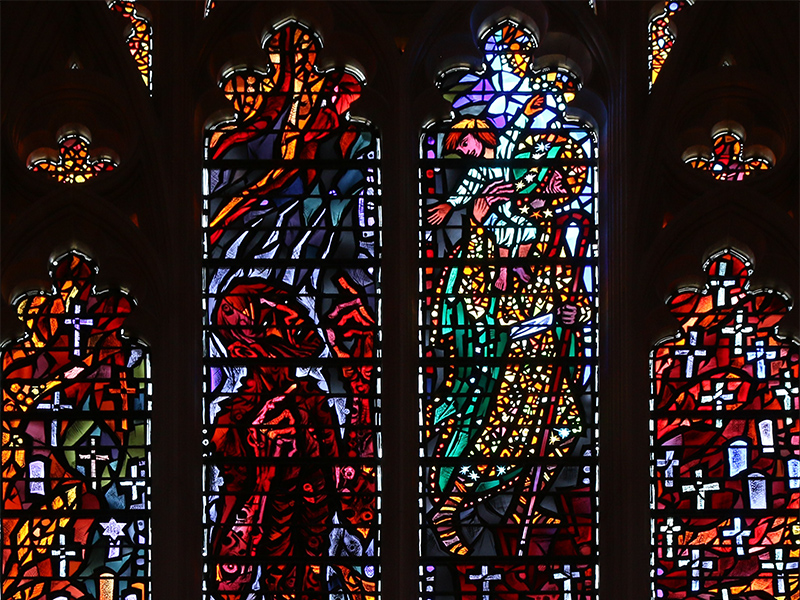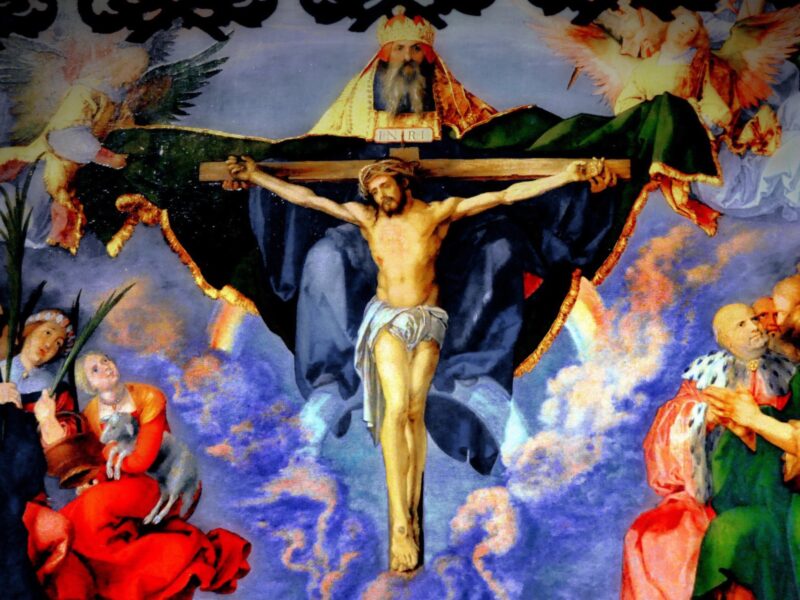
The Mystery of Evil
Thirty-First Sunday of the Year (C) | Fr Aidan Nichols considers the way in which the faith of the Church resolves the question of the mystery of evil. 
The author of the Book of Wisdom is concerned with the goodness of God and the intractability of evil. He admits the second quite openly. There is enough that is radically defective in the make-up of the world to alarm us – alarm us precisely by its intractability, by the fact that there is so little, and sometimes nothing at all, we can do about it. Yet the Wisdom writer also affirms that this same defective creation is related to God chiefly by his love for it. ‘Yes, you love all that exists, you hold nothing of what you have made in abhorrence, for had you hated anything you would not have formed it, and how, had you not willed it, could a thing persist, how be conserved if not called forth by you?’ A funny way to show love, you may think. How could an all-good and all-powerful God have created a world that contains evil? This is the question of the mystery of evil which has faced poets, theologians, novelists, and mystics from Job onwards.
For atheists evil is not a mystery, it is merely a rhetorical way of describing unpleasant facts. The question of evil only becomes mysterious when we affirm in one and the same breath the intractability of evil and the almighty goodness of God.
The author of Wisdom has his own answer which takes us some way forward. Evil, he thinks, provides occasions for our personal correction. The ordeals of those who suffer teach them how to confide themselves to God at the deepest level of their being. The figure of Job, who is probably in mind here, shows how we can indeed allow God to take, mould, and expand us precisely through experiences of frustration and unhappiness that come to us in and through the negative things that happen to us.
But will this suffice for the strongest instances of evil known to us, the horrors that are hardly bearable even to read about? In modern times, the Holocaust has become their emblem. Here we need help from a different image from anything we can find in the Book of Job. Unlikely as it may sound, the image of Christ in the house of Zacchaeus, which figures in the Lectionary as the Gospel for today, might serve our turn.
For here is Israel’s Messiah, the human embodiment of the transcendent goodness of the Lord, entering the home of this morally squalid, almost grotesque little individual, there to eat and drink with him. The visit of the Lord to the house of Zacchaeus is a vignette, a little picture, that illustrates for us the will of God to enter into the flaws of his creation and transform them from within. Jesus in the house of Zacchaeus: an icon of the God who by Incarnation and Atonement shares the experience of a suffering creation so as to draw from ‘this age’ a new world, the world of the Age to Come, the world of the Resurrection we share sacramentally in the Church.
The way the faith of the Church resolves the question of the mystery of evil is to point ahead, to gesture towards the definitive future, the End of all things. In the often repeated words of Mother Julian of Norwich, ‘All shall be well and all manner of thing shall be well’. This is not a theoretical resolution of the horrors of this world so much as the declaration of a truth about the future that renders those horrors bearable, not just for people who read about them but for those who experience them at first hand.
Those who do so experience them have a special place in the story. The sufferings of the God who became human work out their world-transforming effect not least through the sufferings of men and women who are united with the Passion of Christ in their own place and time. On this basis, those whose lives are human disaster areas can be, we have to say, among the most creative agents of all. They can be those who bring forward what the Liturgy calls the ‘the blessed hope’. The hope is the redemption of creation, the transfiguration of the world.
Wisdom 11:22–12:2 | 2 Thessalonians 1:11–2:2 | Luke 19:1-10
Photograph by Fr Lawrence Lew OP of a stained glass window in the Episcopal National Cathedral in Washington DC, USA.
Sorry, the comment form is closed at this time.



A Website Visitor
Thank you for sharing this insight into the meaning of the Gospel story of Jesus and Zacchaeus.